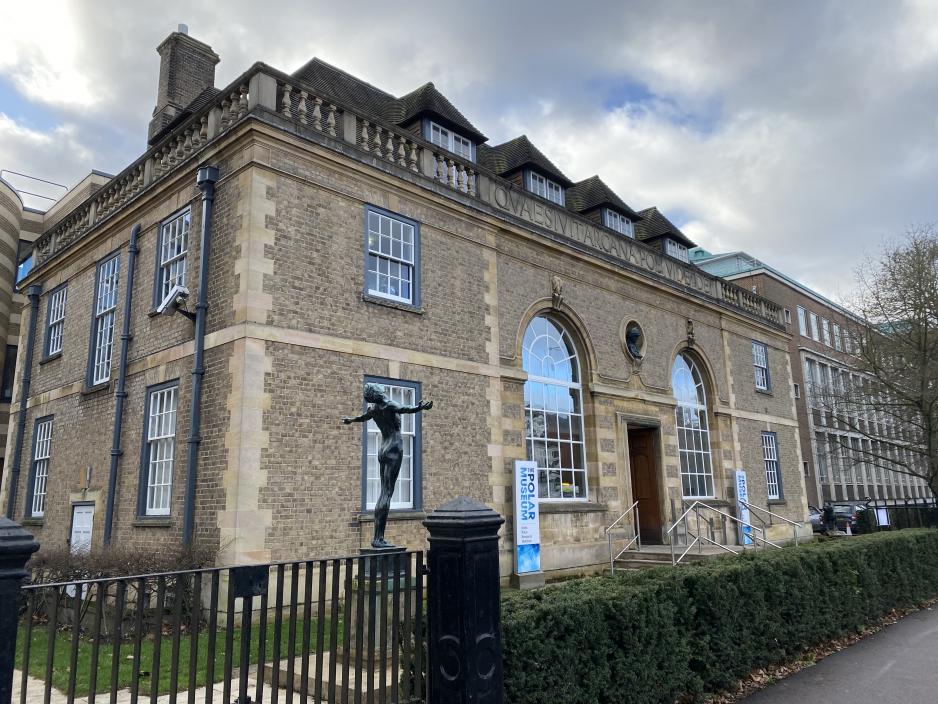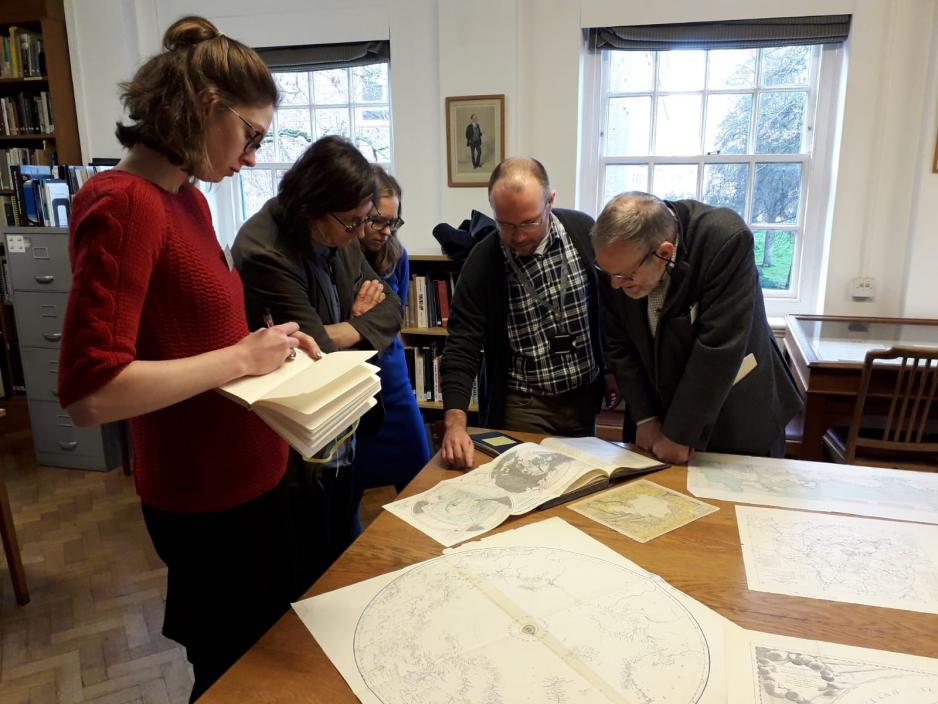Responding to the silencing of Arctic Cultures

Scott Polar Research Institute hosted a workshop about ‘Knowledge Formations and Colonial Encounters in the Arctic’ on 9-10 January. In 2020, the Institute turns 100 years. (Photo by Marc Jacobsen).
Scholars across the Arctic calls for more attention to local cultures when strategies, literatures and exhibitions seek to depict the conditions of the circumpolar North. During a workshop at University of Cambridge, they presented some of these alternative narratives of what the Arctic also encompasses.
The ERC Arctic Cultures project, housed at the University of Cambridge’s Scott Polar Research Institute, recently hosted a two-day workshop on ‘Knowledge Formations and Colonial Encounters in the Arctic’. Academics, museum curators and professional artists presented and discussed their perspectives on how the Arctic has been – and still is being – spoken, written and imagined into existence. This article delves into a few of the many insights from the over 60 delegates who made the journey from Canada, Denmark, Norway, Estonia, Finland, Russia and elsewhere in England.
Framing a ‘natural region’ and forming ‘Arctic cultures’
“Today’s imaginary of the Arctic is not new at all. Throughout history it has been depicted as a ‘natural region’, leaving very little room for indigenous peoples’ cultures which have been silenced for around 500 years. This project aims to uncover how this silencing happened!”. With these words, University Lecturer Richard C. Powell opened the two-day workshop at Scott Polar Research Institute – which in 2020 is celebrating its centenary year.
During the past 10-15 years, narratives about the ‘New North’ have re-emerged through, for instance, the many national Arctic strategies framing the Arctic as something new and open for exploitation. Common for many of these recent publications are – according to Powell – the portraying of the Arctic as something ‘empty’, while, in fact, it is an inhabited, mobile and lived place.
Powell’s project named ARCTIC CULTURES – funded by European Research Council – therefore seeks to draw more attention to the counternarratives and the various cultures inhabiting the Arctic.

Richard C. Powell hosted the workshop which is part of his project named ARCTIC CULTURES. (Photo by Marc Jacobsen).
One example of how this is done is via research into how historic encounters between polar explorers (all white men) and local intermediaries inhabiting the Arctic have been documented by the latter. Perspectives, which are seldom included in the dominant tales about the Arctic.
Going into the Bush
Turning to the Canadian part of the circumpolar North, Professor Peter Kulchyski from University of Manitoba, explained how indigenous and non-indigenous peoples usually understand the meaning of the ‘bush’ very differently. In Canadian everyday language, “to go bush” means “to go crazy”, whereas in the actual bush, the word is used as a positive adjective to describe different kinds of food, medicine, transportation, etc.
Kulchyski – who has lived for a long time in the bush and was in residential school during his childhood – shares the positive connotations of the meaning of bush, and strongly criticizes how Canada, in his perspective, is designed to destroy the bush through organizing and delineating the bush so it is instead called ‘nature’. As Kulchyski states: “Canadian park systems are not a good thing as people often imagine. Rather they are zones of exclusion that keep out indigenous hunters. Canada’s and the United States’ national projects are to destroy the bush. The bush is what remains resilient to neocolonialism”.

Discussion about Arctic maps during the workshop. Peter Kulchyski (2nd from the left), University of Manitoba, explained his ‘Bush theory’ in a keynote speech. (Photo by Nanna Kaalund).
Besides the creation of national parks, the most severe threat to the bush is if natural resources are discovered and exploited, Kulchyski further explained. Then, the bush is not only delineated and organized but ultimately, and often, destroyed so it will never return to what it once was – no matter how “sustainable” the mining is claimed to be.
Geosocial relations in Thule
Since the 17th century, Greenland has been a centre for exploitation of natural resources in the shape of mainly whaling and mining. Focusing on Thule and its many geosocial relations, Professor Kirsten Hastrup from University of Copenhagen unpacked the 110-year-old history since the Greenlandic/Danish polar explorer, Knud Rasmussen, established a trading post for the local inhabitants, while it also functioned as an important base for the seven Thule expeditions during 1912-1933.
In 1953, approximately 100 of the local people living in the area were forcefully removed so the United States could establish their base – “to which they stole the name of Thule” – that became a central component in the military front towards USSR during the Cold War. Today, 500 people are working on the base, but in the 1960s as many as 10,000 people were stationed there.
Some of them employed to construct Camp Century which eventually was abandoned due to a destroyed reactor that could not carry the weight of the heavy inland ice sheet under which it was located. Subsequently, the site was not cleaned up and therefore “this imperial brumation is still casting long shadows into the future as people are still worried about what had been left”, as Hastrup argued.
Because of climate changes, geosocial relations are currently destabilizing in Thule where different scales (e.g. the global, regional, national and local) and various temporalities (e.g. past, present and future) often clash. According to Hastrup, this leaves Thule with a manifest precarity which is also vulnerable to outsiders whether conscious of it or not. “In this geosocial dialogue between the different scales and temporalities, politics and science play important roles […] In this process, it is essential to be open to new vocabularies beyond colonized and colonizer. ‘Indigeneity’ is also a construct” Hastrup added.
This workshop was a first of several organized by the ARCTIC CULTURES project team, University of Cambridge. The second is scheduled to take place in September 2020.

